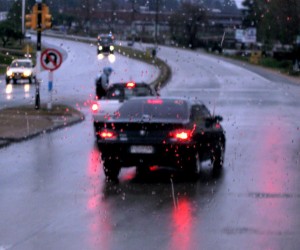Driving in the Rain
 It’s almost spring in Edmonds and we have hit the rainy season. What does this mean for drivers? Freeway backups and accidents due to slick roads. Rain is to blame for thousands of accidents every year. The first rain after a long period of dryness can cause oil to come to the surface of the road. This means you will have less traction on your tires so you might skid while breaking or spin out of control. Roadways may be covered in water or have standing pools of water causing your vehicle to hydroplane at accelerated speeds. Moreover, drivers experience decreased visibility due to rain on headlights and windshields. Most of us know to slow down in the rain, but what else can we do to travel safely in the rain?
It’s almost spring in Edmonds and we have hit the rainy season. What does this mean for drivers? Freeway backups and accidents due to slick roads. Rain is to blame for thousands of accidents every year. The first rain after a long period of dryness can cause oil to come to the surface of the road. This means you will have less traction on your tires so you might skid while breaking or spin out of control. Roadways may be covered in water or have standing pools of water causing your vehicle to hydroplane at accelerated speeds. Moreover, drivers experience decreased visibility due to rain on headlights and windshields. Most of us know to slow down in the rain, but what else can we do to travel safely in the rain?
The first few hours of rain after a dry spell can be the most dangerous. Use great caution during this time because engine oil and grease built up on the road will mix with water creating an extremely slick surface.
Plan for more travel time. Drive at a slower pace than normal and keep in mind that traffic will also likely be moving slower rate. Keep in mind that your route may be flooded or blocked.
Give trucks and busses additional following distance because tires can create enough spray to block your vision.
When breaking, do so earlier with less force than you normally would. This will let the driver behind you know that you are slowing down and will increase the stopping distance between you and the car in front of you.
Make sure to use turn signals so that other drivers know your intentions.
Slow down on curves and turns more than you would in dry conditions. Standing puddles are usually at the edge of the road due to crowning in the middle. This means that you will want to drive in the center lane to avoid deep standing water.
Use your headlight even if it is daytime. This will help other drivers to see you coming. If however, there is fog do not blast your high beams because the light will reflect back at you making it harder to see.
If it is raining so hard that you cannot see the road or car in front of you, pull over and wait it out.
If you begin to hydroplane, do not break or turn your wheel quickly. Instead release the gas pedal slowly and steer straight until your car regains traction.
Before you go out, make sure your wipers are in good condition, have a good emergency kit and check your tire traction and pressure.
The Cunnane Law Office has provided this content for informational purposes only. You should refer your questions to a personal injury attorney.

